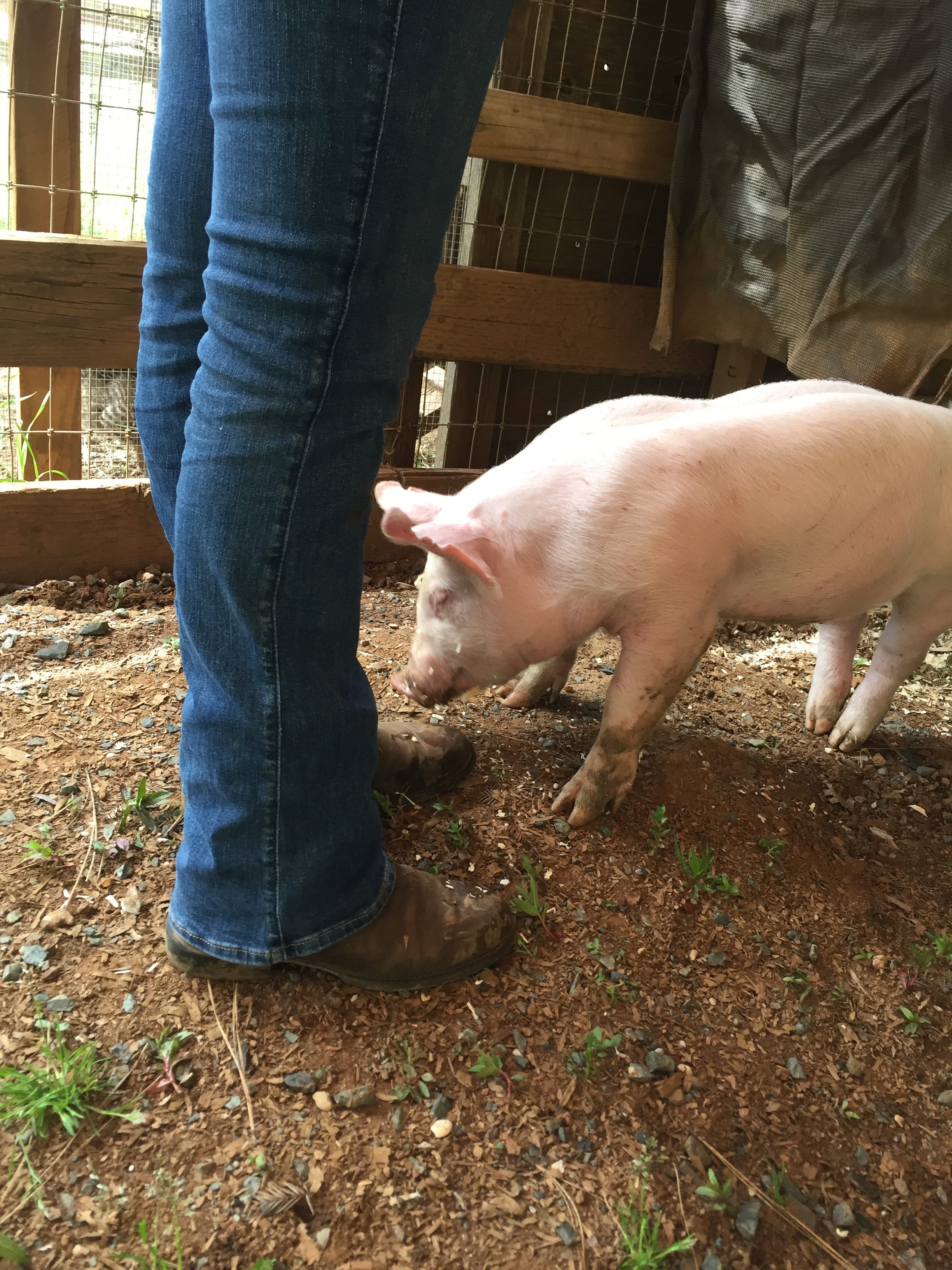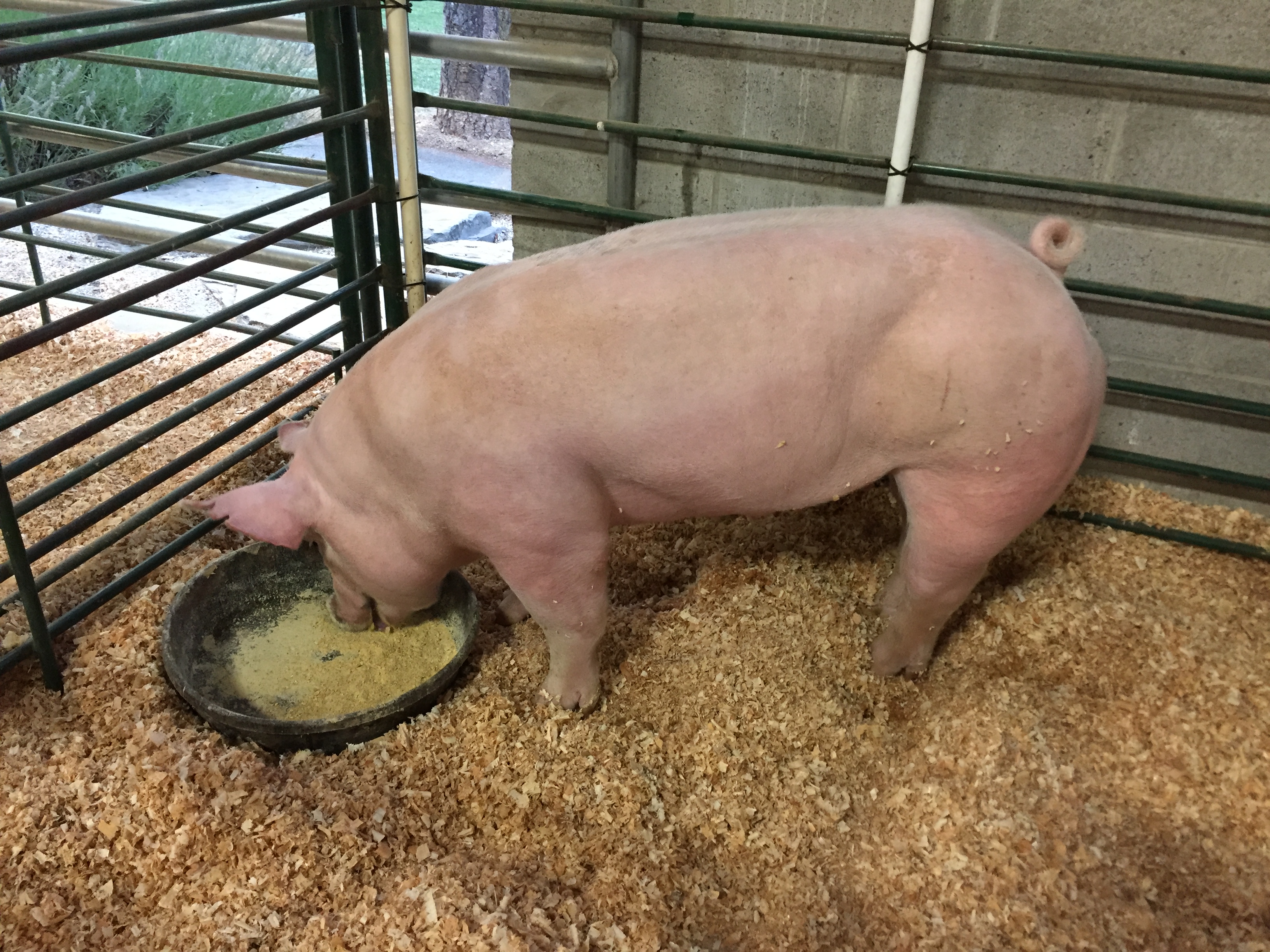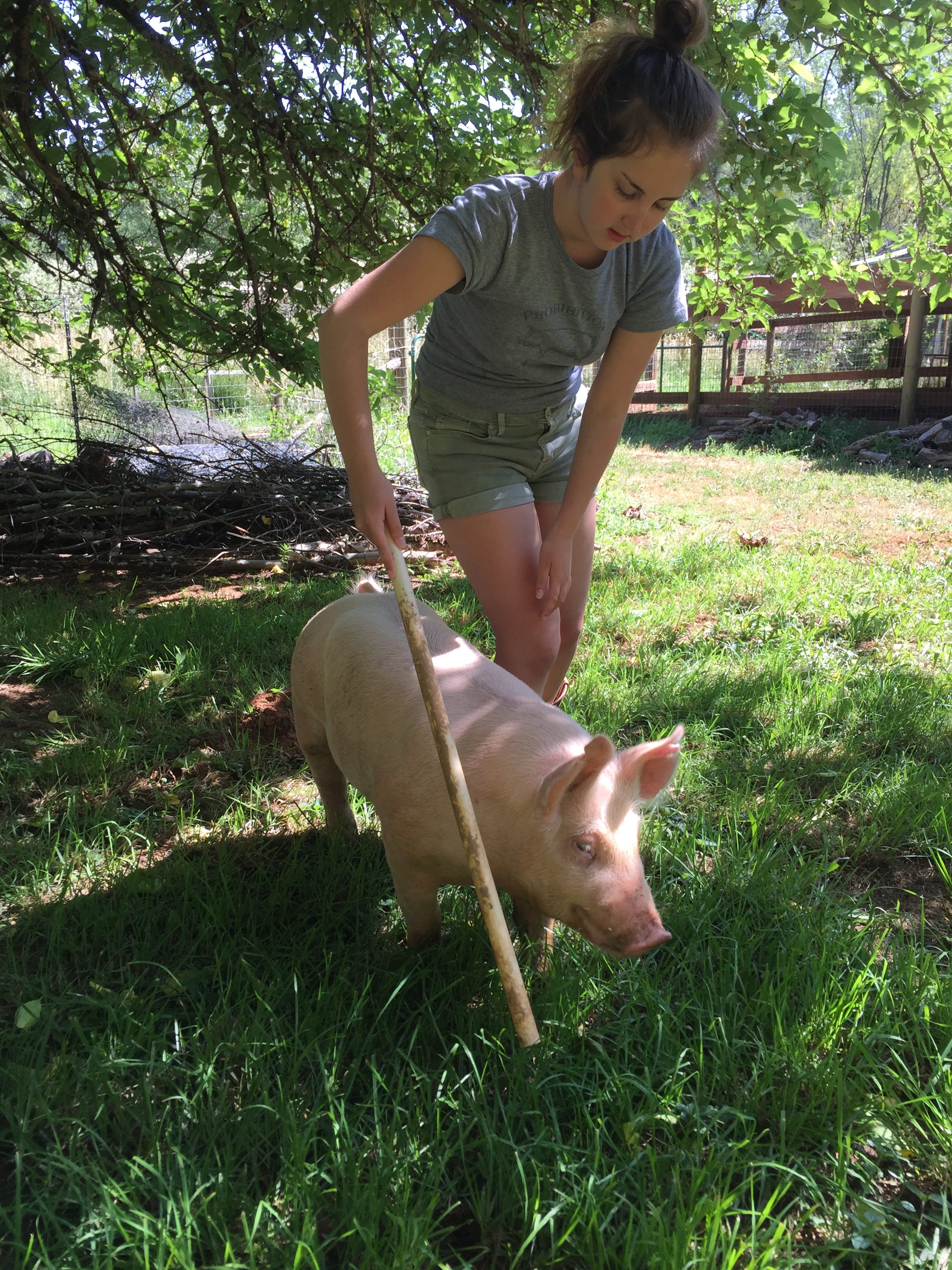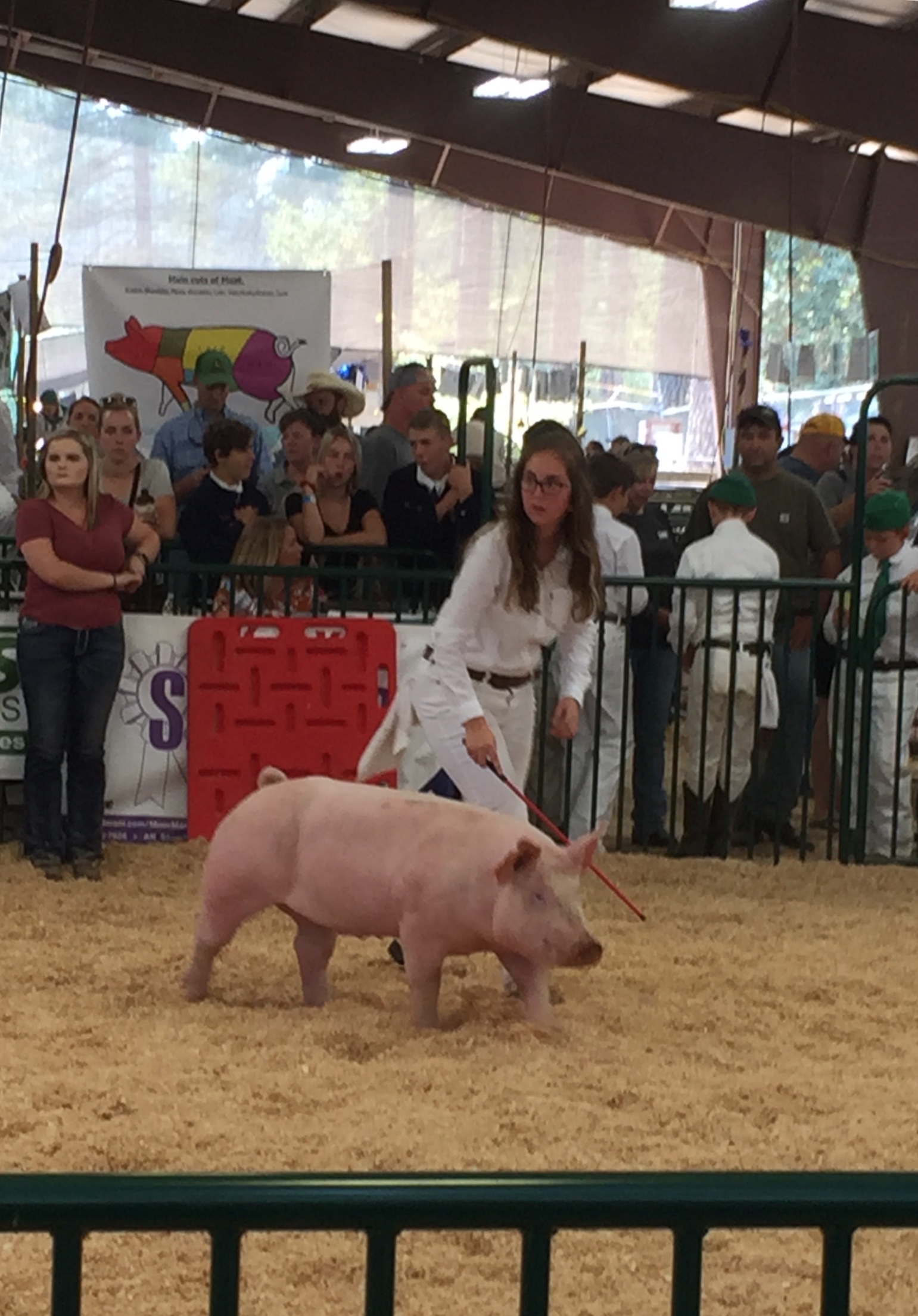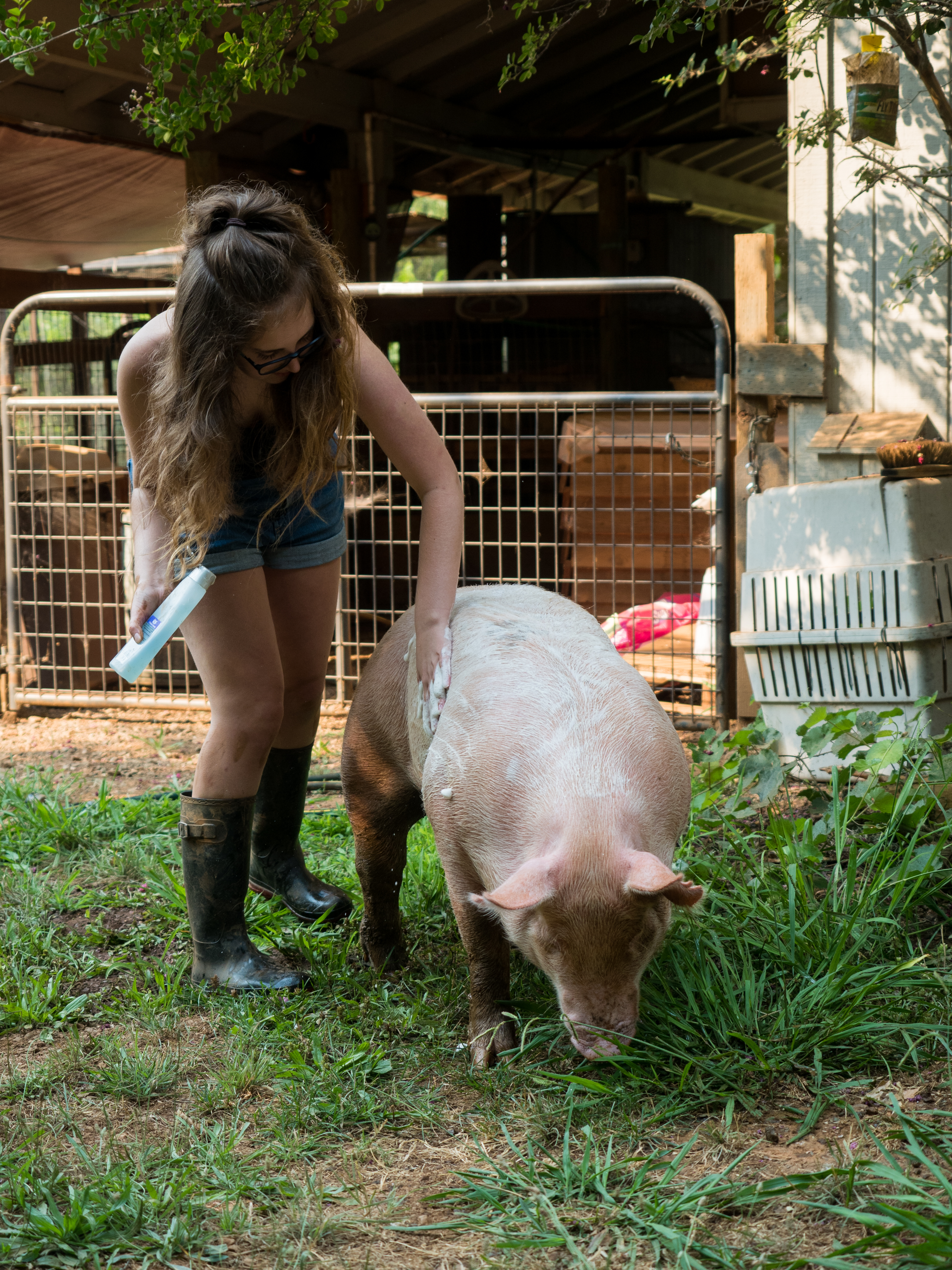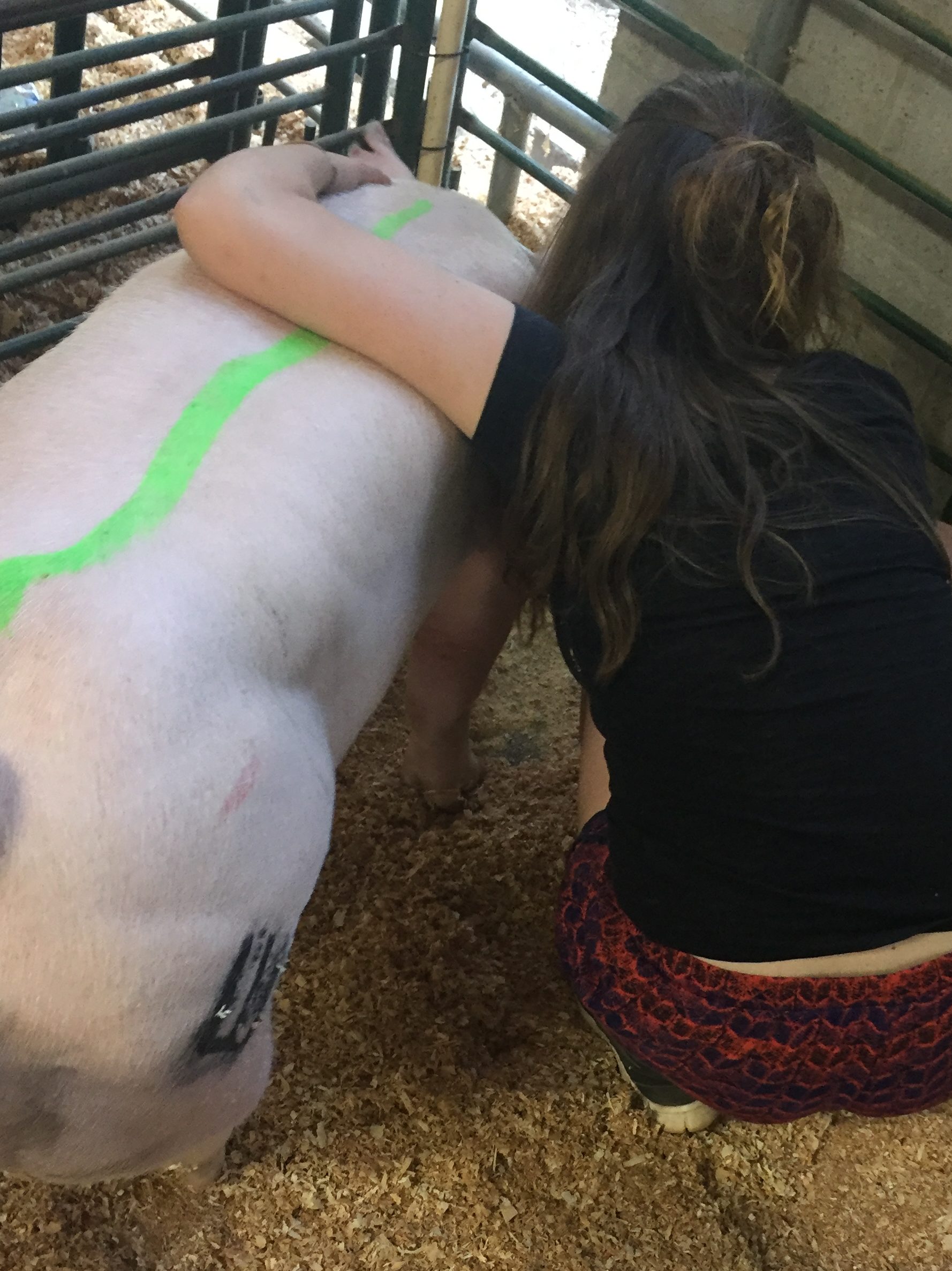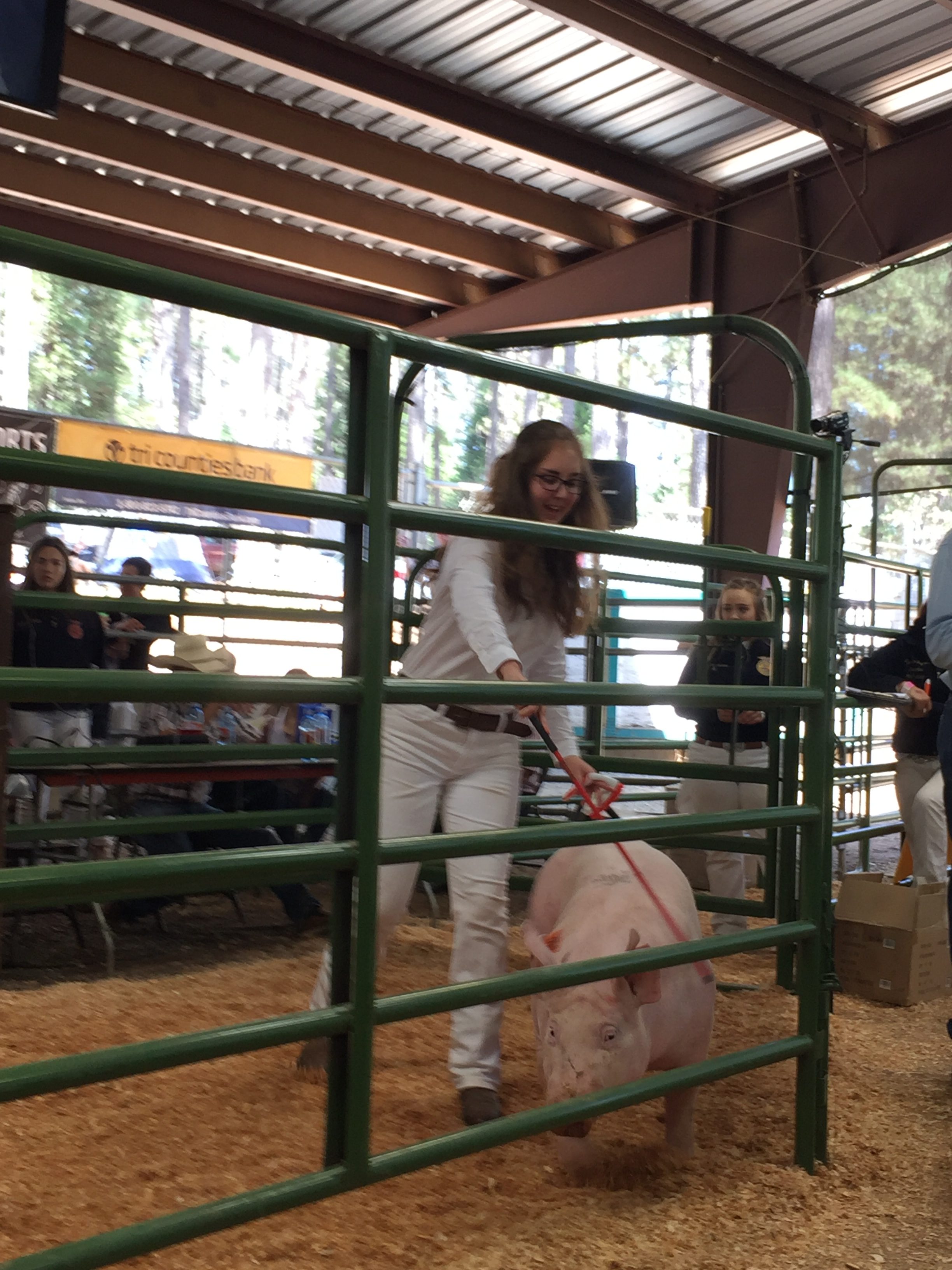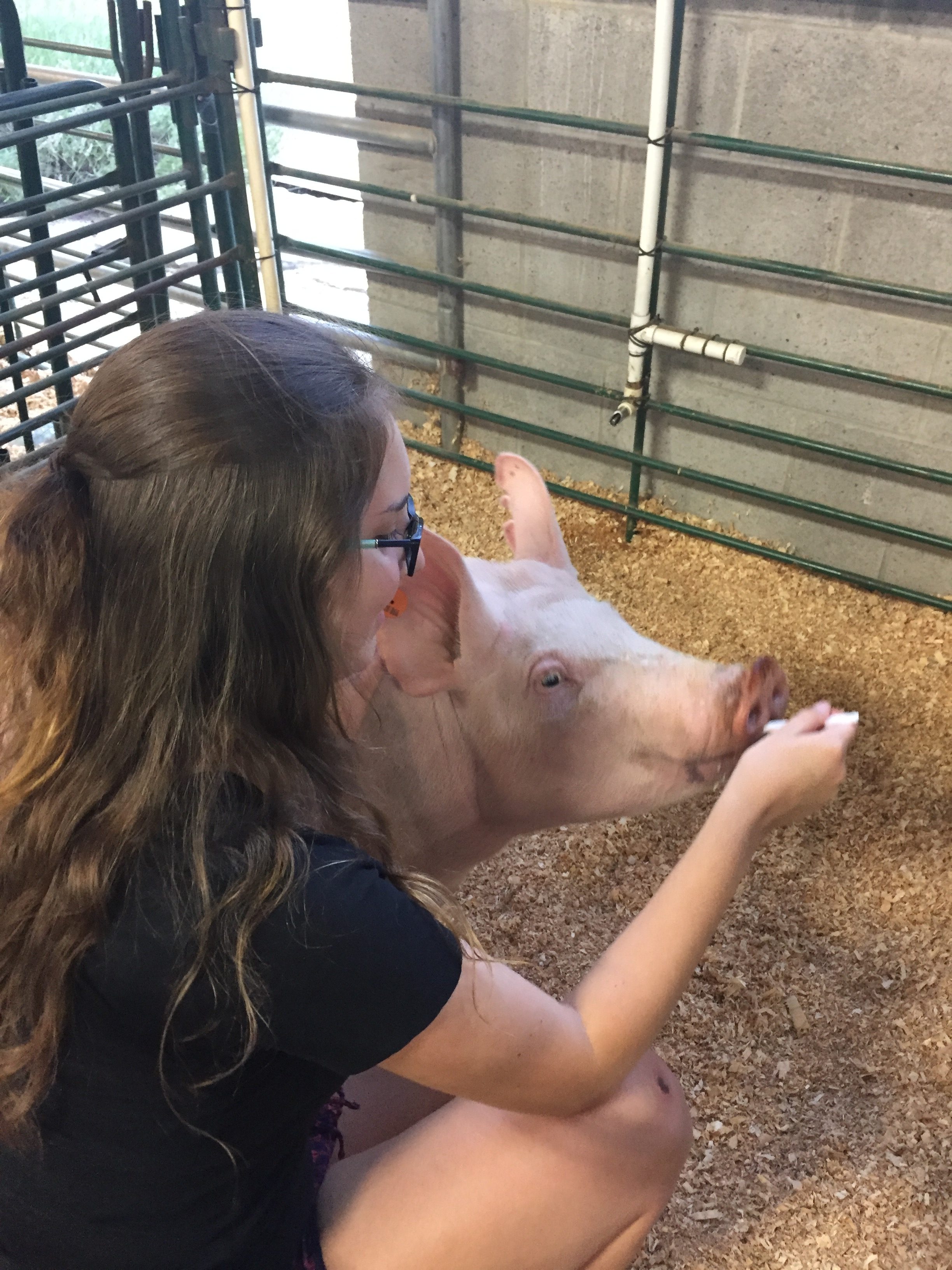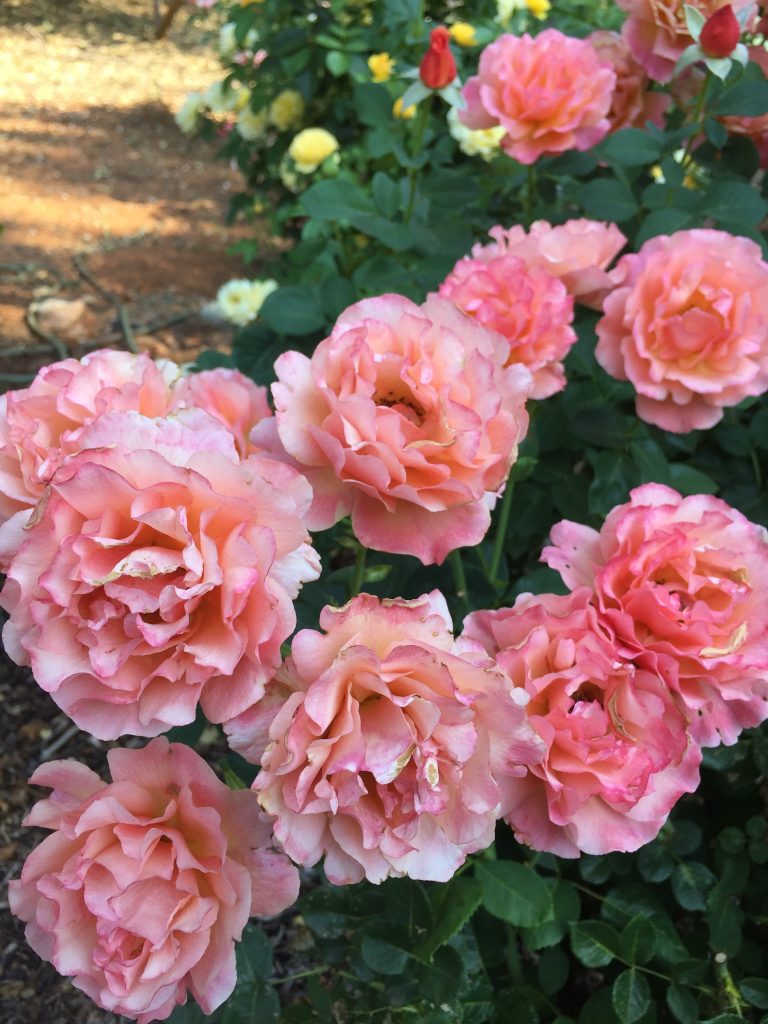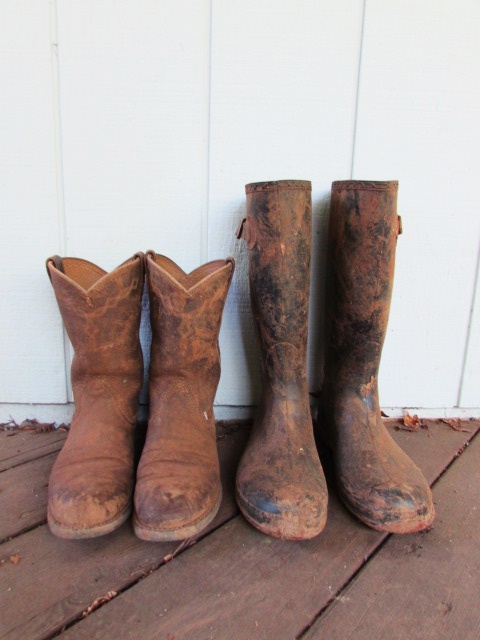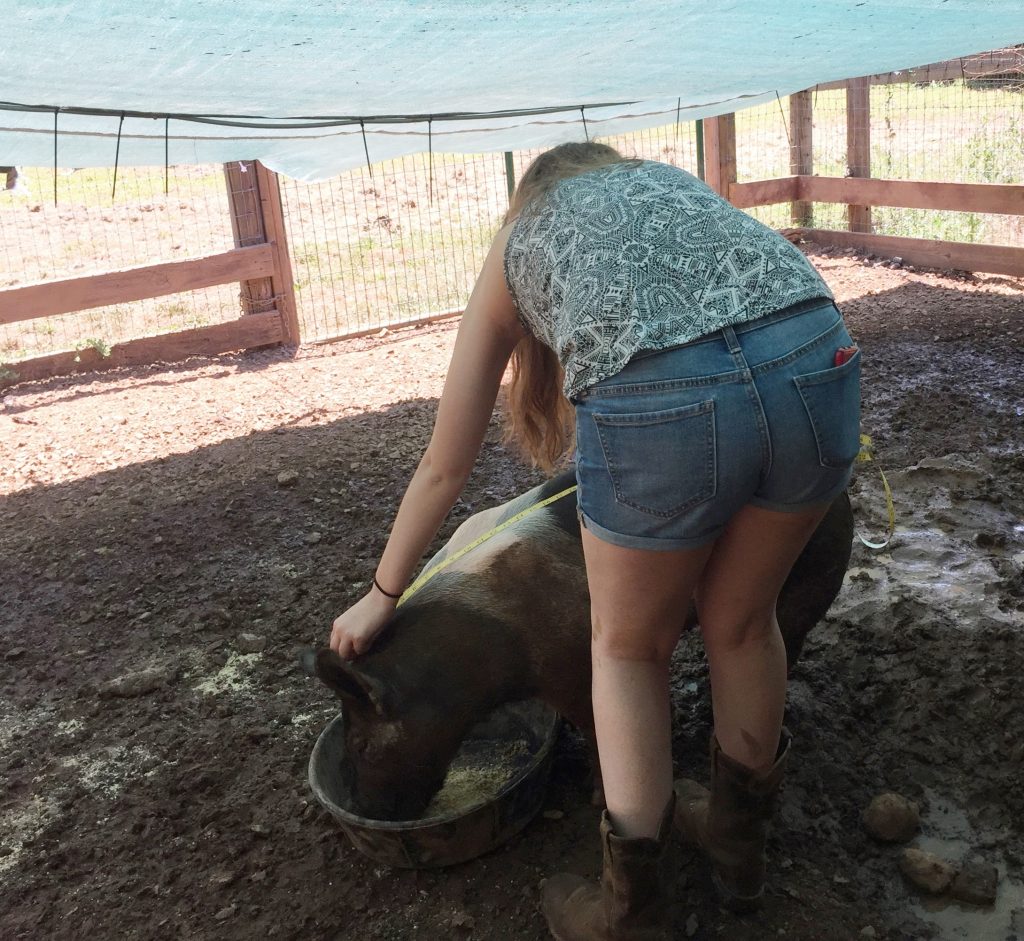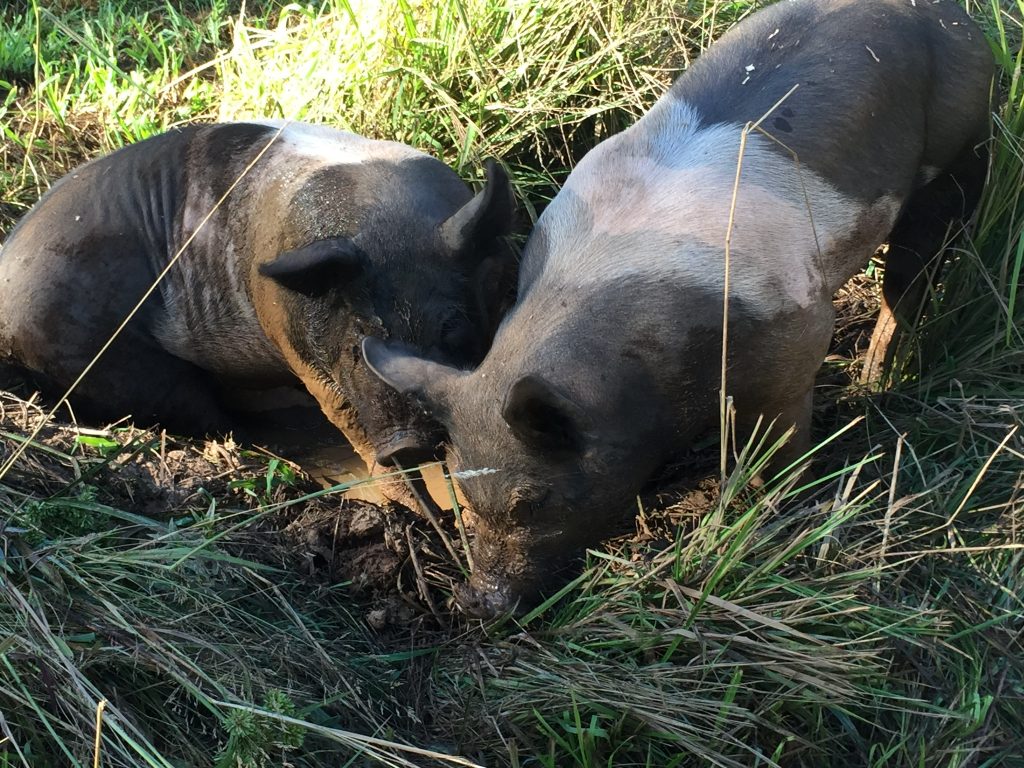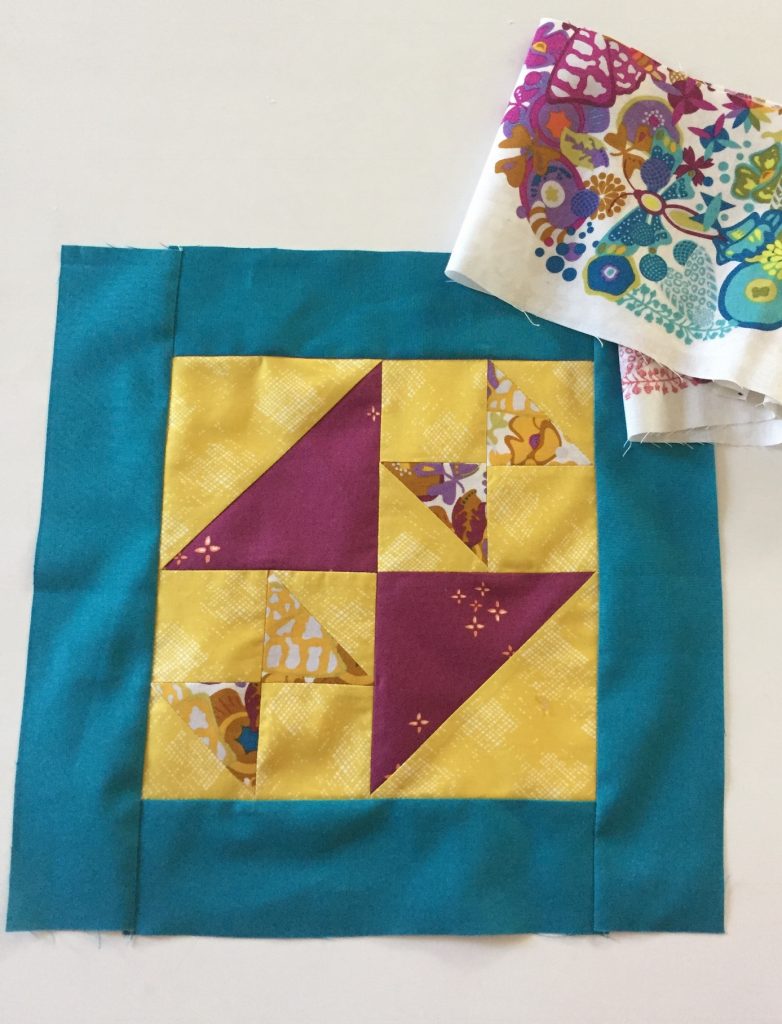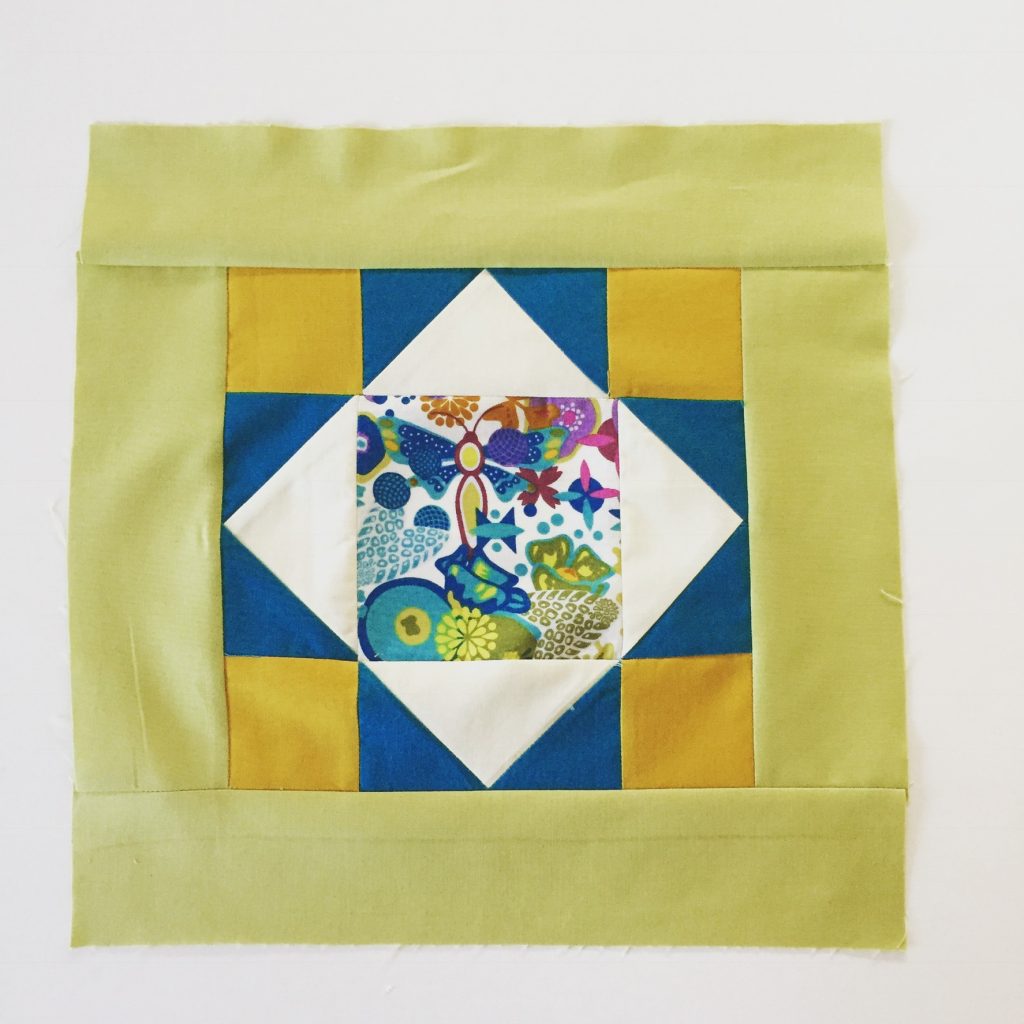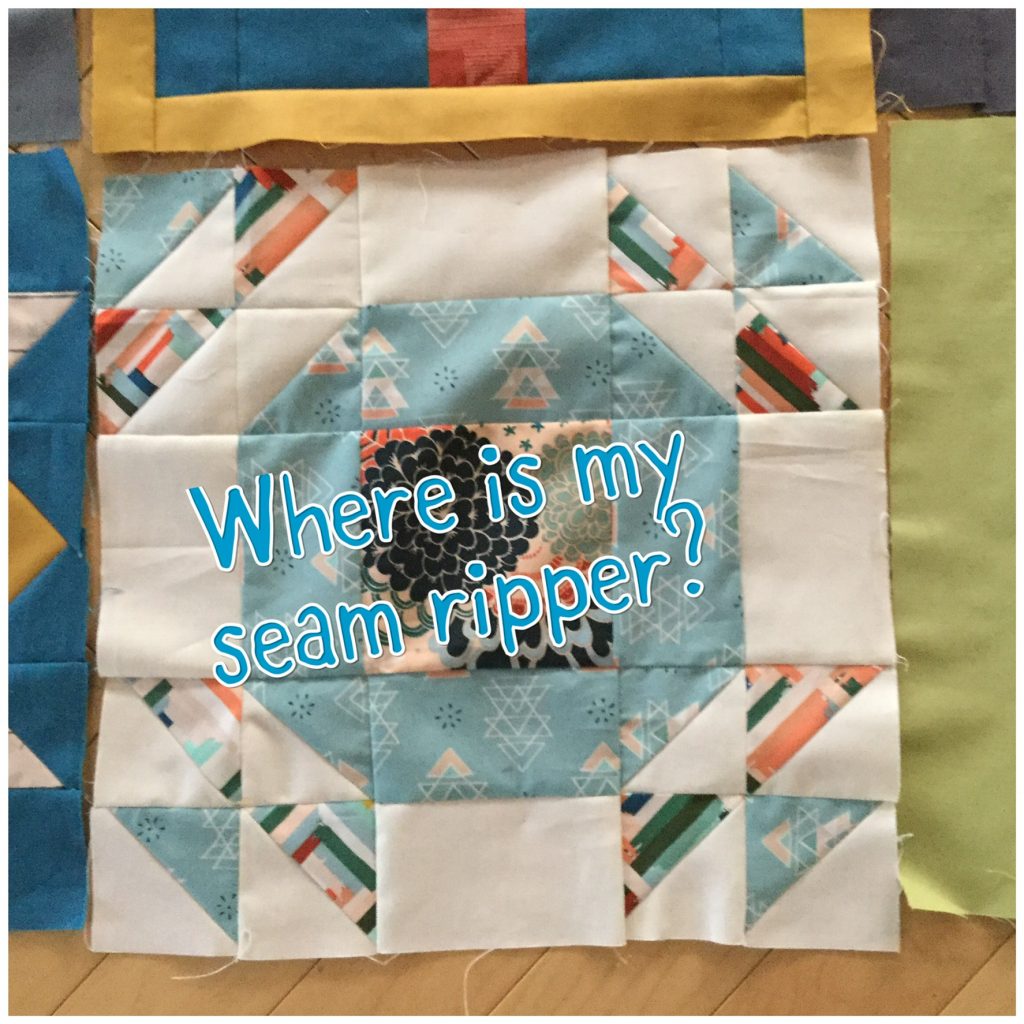As you know by now, my daughter raises show pigs, trains them, loves them and then shows them at the fair. After showing them at the fair, she spends time in the swine exhibit letting children ask questions and pet her pig. On the last day of the fair, she shows her pig one more time during a huge auction and people from the community bid on her pig. The highest bidder then works directly with a butcher and ultimately ends up with a lot of pork in his or her freezer to eat all year long. Lots of people ask why she does this? How can she take care of this animal and love it and then ‘let it be killed’.
Julia and I talked a lot about this a few days ago. Actually, we have talked about it many times. But coming toward the end of her time with Olive has been hard. There were lots of tears a few days ago as she grieved and experienced tremendous sadness that Olive would be gone.
I thought it might be good to explain, as her parents, why my husband and I are ok with this process. First of all, I should say it is really difficult. My husband and I got really attached to Julia’s pigs last year and after all was said and done, we thought – ‘nope, we aren’t doing this again – it was too hard on us and on Julia’. After cleaning up the pen and putting away the supplies, we assumed that was one for the books – over and done. But then around November (8 weeks later) Julia was talking about getting another piglet in the spring. We asked her if she was sure she wanted to go through the whole process again. She said yes – it had been such a good experience and she wanted to have another go at it. Her logical mind explained – Now that I know how to do it, and the pen is built and we have all the gear, I want to do it again. Ok – we agreed, you can buy another piglet.
Let’s look at some of the reasons we support this desire of Julia’s. First of all, our family eats meat. As meat eaters, we have to acknowledge the source of our protein. Animals are raised and then slaughtered on a mass scale for people to purchase and feed to their families.
As a teen, raising a show pig, Julia works very, very hard to balance the right amount of protein, carbohydrates and fats when feeding her pig. She understands how to build muscle (the meat from the animal) and fat (where the flavor comes from – think bacon!) She knows how much to feed her pig each day (basically giving a pig three pounds of food a day equates to roughly one pound of weight gain each day). She balances that all out and decides how much she wants her pig to weigh by the end of the summer and feeds accordingly. She adjusts this as she sees if the pig is gaining too much or too little so that she is a good size by fair time. Toward the end of summer, she adds in oats and/or corn to “finish” her feeding of the pig. This adds a layer of fat to the meat which is needed or the pork will be too lean and dry. Julia’s goal is to provide a quality meat to whomever buys her pig. There is a lot of science involved in all of this and she really likes this process.
Even more important than the science of raising an animal, is the huge amount of responsibility it requires. Raising a show pig is much more than taking care of a family pet. After investing a lot of her own money in a show pig, we want Julia to be fully responsible for taking care of this animal; it is her project and her financial investment. We are supportive and we will help but she does 99% of the work. If she is gone for a day, I am happy to feed her pig. But on a daily basis she is up by 7am, no sleeping in for this girl. She feeds her pig twice each day and takes her out of the pen to exercise.
She trains her pig to respond to her show stick and walk in a certain fashion so she can eventually be ready to show in a ring. If there are issues, Julia is the one to notice them and take care of them. Pigs are really sensitive to their environment and change is stressful. For instance, when bringing a new pig home Julia is careful to feed it the same food the breeder has been giving it. She knows that a change in water or feed will probably give the pig intestinal problems. To avoid this she uses a lot of probiotics to help her animal’s gut flora until it adjusts to the new feed and/or water.
As time goes on, Julia needs to exercise and train her pig at length to build muscle. She has learned to look at her animal’s structure and decide if the muscle is developing appropriately. Toward the end of summer, Julia adds additional training time to build stamina so her animal can be in a show ring for a long period without feeling stressed.
It is a good feeling when all of your hard work shows up in the ring and the livestock judge sees the results of all of the time spent training.
When problems arise, and they always do, we watch Julia and let her try to find the solution. Examples of this might be running out of feed because she didn’t keep track of how much was left. If something like this happens, I don’t rescue her – she needs to take time and make a trip to the feed store – even if it isn’t convenient for her. When Olive developed a huge rash early in the spring, Julia was the one to call her breeder, have him come out and take a look and then go out and spend $50 on creams and sprays to soothe the rash. She was the one to go out multiple times daily to apply the ointments all over her itchy pig. I didn’t do any of this for her, not because I didn’t want to but because she wanted to. She takes care of her animal.
As parents, my husband and I feel the responsibility for this project is invaluable for our teenager. It is truly her summer job and it provides income for her (more on that in a minute). Julia is basically an only child as her brothers are quite a bit older than her and don’t live at home. Not having a younger sibling to help care for, this provides similar tasks of caring for another being. It is important when raising children to be sure they have the opportunity to care for something other than themselves. Raising a pig teaches our daughter to care for and respond to the needs of this animal.
Here is the hard part though. Caring for and loving on this animal for five months means attachment. It means it will be really difficult to give her up at the end of summer. When our family talks about this we acknowledge that piglets are raised for meat. We talk about how the majority of pigs live six to seven months at most, unless they have been raised as breeders and live on a farm to provide more piglets. We talk about the life provided to piglets on commercial farms where they have to raise hundreds and hundreds of pigs to provide meat for a meat-eating society.
Those pigs are not loved, petted and played with on a daily basis. No one goes out and talks to them (pigs are incredibly social and vocal with their owners). No one discovers the piglet loves fresh peaches and cuts them up and feeds bits to them for a treat. No one finds out that the piglet loves to be scratched on the belly and thus gives that pig the best belly rubs ever each day. But when Julia raises a piglet all of this happens. The pig lives such a sweet life while on our property being cared for by a person. We feel it is a great benefit for a pig to live this sort of life as compared to life in a commercial operation.
Financially a pig is expensive to raise. It is like a small version of a commercial farm. Julia pays $350 for the pig. We keep track of all of the expenses so she knows what it really costs to do this. This is one lesson many families fail to teach. So many parents buy the pig and the feed, pay for the vet expenses and the equipment needed. Then when auction time comes, the child receives this huge check after the animal is sold and says wow, I just earned $1200.00! But is this real life? Nope, not in our parental opinion. Julia pays for her pig and we help her with the food expense. But she knows exactly how much all of this costs and she knows when she gets that check, she will pay us for a large portion of the expense. That way she learns what her “net income” is from her business.
Finally, and some might argue with this, we feel the sadness Julia experiences at the loss of her pig is also valuable. There is a quote by Carl Jung (see above) that illustrates the value of Julia loving her pig so much that she experiences grief or sadness when losing the animal. Protecting our children from negative experiences does them no favors. It is by experiencing difficult emotions, such as sadness, anger, or frustration and then working through it that humans learn to deal with problems. It is also how a person develops confidence that they can handle the difficult parts of life. Experiencing sadness and grief makes a person hugely appreciative of happiness and joy. When parents don’t allow a child to do something that might cause distress or tears because they want to protect her, they are doing a disservice.
I had mentioned that Julia had a really tough day on Friday afternoon. She cried and was terribly sad. We talked and I rubbed her back. She cried a bit more. Then we went to play with Olive. After a while, Julia’s tears were done. She looked at me and said, “I feel better, this is how it is supposed to be. Olive isn’t my pet.” On the last day with Olive (yesterday) Julia gave her so many belly rubs. She gave her a huge dinner (since eating is Olive’s very favorite activity!). We went and had a cinnamon roll out on the fairgrounds and then came back for one more good bye with Olive.
Julia brought her vanilla ice cream and spoon fed it to her. Olive went wild for this. A few more belly rubs and then Julia told Olive thank you for being such a good buddy. (She called Olive ‘buddy’ quite a lot.). She told Olive she loved her and then we left. It was a good summer, for Olive and Julia both.
Newsletter!
Have you signed up for my newsletter? It is published every month or so and is full of information about my shop, new arrivals, sales, and events. Click here to sign up!


